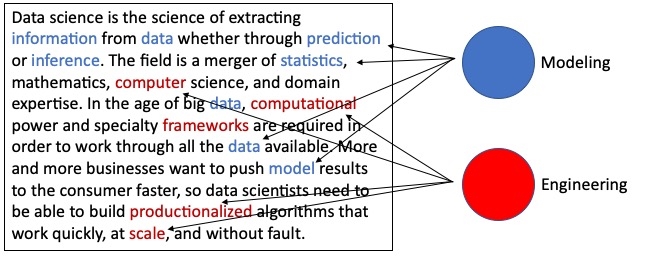Topic modeling is one facet of natural language processing (NLP), the field of computer science exploring the relationship between computers and human language, which has been increasing in popularity with the increased availability of textual datasets. NLP can deal with language in almost any form, including text, speech, and images. Besides topic modeling, sentiment analysis, object character recognition, and lexical semantics are noteworthy NLP algorithms. Nowadays, the data being collected and needing analysis less frequently comes in standard tabular forms and more frequently coming in less structured forms, including documents, images, and audio files. As such, successful data science practitioners need to be fluent in methodologies used for handling these diverse datasets.
Here is a demonstration of identifying words in a text and assigning them to topics:

Figure 7.1: Example of identifying words in a text and assigning them to topics
Your immediate question is probably...



